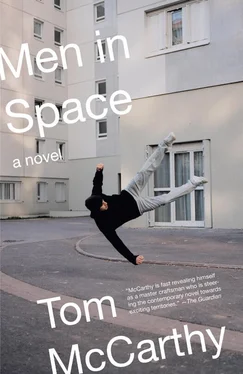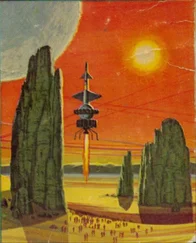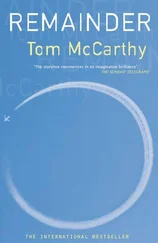Helena holds the strip up to the book’s list. This is strange: none of the letters match. There were three main clusters, then smaller ones dotted between them: little points strung out across the sky, like stars and constellations. She just assumed they were some obscure form of Byzantine, because that’s the alphabet these zographs used, even in this and the last century. If they’re not Byzantine, then … They’re not Cyrillic, obviously. Or Attic Greek. Did the Phoenicians have an alphabet? Yes, but it was lost completely after Carthage fell. She runs through her head the timeline that she used to have pinned to her wall: Aeolians wiped out Lydians; then Dorian, Aeolian and Ionian Greek were all synthesized into Hellenic, with its Koiné, after Alexander’s conquests … All these invasions, sackings, slaughters, lost children … And for what? So that an alphabet could be formed, and people could communicate? Nothing’s being communicated by the texts she’s got in front of her. It’s infuriating: the painter and his viewers must have understood it. The saint too: as he floated away from the town and then the mountain, floated towards whatever resolution it was that awaited him, he seemed to have taken the message on board, to have surrendered himself to its truth’s sad ineluctability. The men busying about beside their ships beneath the writing seemed, in their own casual, disinterested way, unperplexed by it — seemed, if not to understand it, at least not to care. Ilievski and the others won’t have lost any sleep over what the letters might have been spelling out. But Helena does care, wants to know. She tssk s quite audibly; the student in the space next to hers turns round and looks at her, still slurping at his straw, which makes her blush …
She gets up, patters her way down the reading room towards the corridor again, then crosses this and goes to the ladies’ toilet. The orangeade’s not ready to come out yet. She stands by the mirror on the wall and looks at herself. Petite. Fragile . Her face is thin and pale. There’s a mole just above her lip, to the right. Only, in the mirror, it’s the left — or would be, if her reflected image were an actual replica of herself. A real fake. Do photos do that too, switch sides like that? She pulls her passport from her bag again, opens it to the photo page and holds it up beside her image in the mirror so that there are two Helenas — one life-size, trapped in glass, one shrunk and stuck to paper — staring at her. No, photos don’t switch sides: the mole’s back on the right side in her passport, to the left of the photographic paper’s square, beside the letters that, both in Cyrillic and in Roman, announce her name and nationality and place of birth. Presumably, then, if she held the photo up beside her face, her real face, facing back into the mirror, then the mirror would transform it so that it matched the larger image of herself that … She tries this. It works. Applied physics: Toitov would be proud. The mirror’s screwed the letters up, of course, thrown them back inverted: the μ becomes a u, the ε a 3, Pq. Funny how they rearrange themselves, some chancing their way into new, functional roles while others become meaningless, non-signifying shapes, pure code. As if they, too, were conspiring to confuse her, just like the strange, non-Byzantine letters in the painting — as if, if she were to … then they too would …
The reflected Helena’s mouth has fallen open, silently — the gasp came from outside the image, from the mouth of the real one. She crashes from the toilet, almost runs back to her desk. People must think her mad, but she doesn’t care about that now: she’s too excited. The student slurps again in her direction, his way of flirting maybe, as she whips the strip of paper from the alphabet page of the useless Dictionary , then races back towards the toilet and — Yes, it works! As she holds the strip to the mirror the letters jump round to become standard Attic script, forming words — ancient Greek words — she recognizes. There’s  , agapé : that’s love . Then
, agapé : that’s love . Then  , sympatheia . She knows that word too: understanding — or, in later phases of the language, legacy . Then there’s the third one, that was written to the left of the other two, and slightly higher up, above the mountain, by the saint:
, sympatheia . She knows that word too: understanding — or, in later phases of the language, legacy . Then there’s the third one, that was written to the left of the other two, and slightly higher up, above the mountain, by the saint:  . Erémia . What’s that word? She knows it, but just can’t … It’s in the same family as eremos ; must be the noun. And eremos is — that’s right: solitary . So erémia is solitude . Not loneliness , just solitude — emotionally uncharged, a factual, contingent state. Love. Understanding (or legacy). Solitude . The smaller words that in the painting circled round these three like satellites are tes , the feminine plural — no, singular — form of the genitive, and eis, towards . So …
. Erémia . What’s that word? She knows it, but just can’t … It’s in the same family as eremos ; must be the noun. And eremos is — that’s right: solitary . So erémia is solitude . Not loneliness , just solitude — emotionally uncharged, a factual, contingent state. Love. Understanding (or legacy). Solitude . The smaller words that in the painting circled round these three like satellites are tes , the feminine plural — no, singular — form of the genitive, and eis, towards . So …
Back at her desk again, Helena writes all the words down. Agapé, sympatheia, erémia, tes, eis. Love, understanding (legacy), solitude, of the (s, fem), towards . She writes them in her notebook, laying them out the same way as they were in the painting, in the same positions. Semantically, the terms could be linked together in a number of ways. If the eis is coupled with erémia , then it’s towards solitude . Only eis takes the accusative, so it’d have to be erémian . But then if you were lax about the grammar, given that the terms weren’t linked in any sequence and so don’t really have to decline perfectly, you’d get, progressing upwards and inserting the tes: Love of understanding towards solitude . You could get away with modifying that into Love of understanding leading to solitude . Or, really taking liberties here: Love must understand solitude . Then if the tes were reversed, it would be Understanding of love . But how would erémia fit in? Solitary is he who understands love ? That sounds more like some Chinese proverb. Could it simply be a form of equation: Love is equal to understanding, which is equal to solitude ? Not really, or the tes and the eis would be redundant. How about overcoming : Love overcoming solitude? Could as easily be Solitude overcoming love . And understanding , then? And legacy ? Besides, overcoming is nikan , not eis . And erémia , in the painting, was the term placed highest up — right up above the mountain, beside the ascending saint: hardly being overcome …
Helena looks up from the figures in her notebook, gazes into space. Love, understanding, solitude. Of the three, only solitude is certain: each in our separate sphere, or bloc, or oval — partitioned, alone. Anton wasn’t back last night. Didn’t phone this morning either. Maybe solitude is the truth of love, of understanding — the basis for and legacy of them: an acceptance of solitude. The saint, floating upwards, merging with his solitude, with all solitude as he drifted further from the men and their ships, the town, the sad and fallen people on the mountain’s side. The slurping student’s gone now. All of them have: the whole library’s empty save for the young man behind the issue desk and a small old woman cleaner. She’s slowly moving up and down between the rows of tables picking up books that have been left open, unreturned, or prodding with a worn-out broom at the discarded, scrumpled pages lying around the floor like knowledge’s debris, its butt ends.
Читать дальше

 , agapé : that’s love . Then
, agapé : that’s love . Then  , sympatheia . She knows that word too: understanding — or, in later phases of the language, legacy . Then there’s the third one, that was written to the left of the other two, and slightly higher up, above the mountain, by the saint:
, sympatheia . She knows that word too: understanding — or, in later phases of the language, legacy . Then there’s the third one, that was written to the left of the other two, and slightly higher up, above the mountain, by the saint:  . Erémia . What’s that word? She knows it, but just can’t … It’s in the same family as eremos ; must be the noun. And eremos is — that’s right: solitary . So erémia is solitude . Not loneliness , just solitude — emotionally uncharged, a factual, contingent state. Love. Understanding (or legacy). Solitude . The smaller words that in the painting circled round these three like satellites are tes , the feminine plural — no, singular — form of the genitive, and eis, towards . So …
. Erémia . What’s that word? She knows it, but just can’t … It’s in the same family as eremos ; must be the noun. And eremos is — that’s right: solitary . So erémia is solitude . Not loneliness , just solitude — emotionally uncharged, a factual, contingent state. Love. Understanding (or legacy). Solitude . The smaller words that in the painting circled round these three like satellites are tes , the feminine plural — no, singular — form of the genitive, and eis, towards . So …










